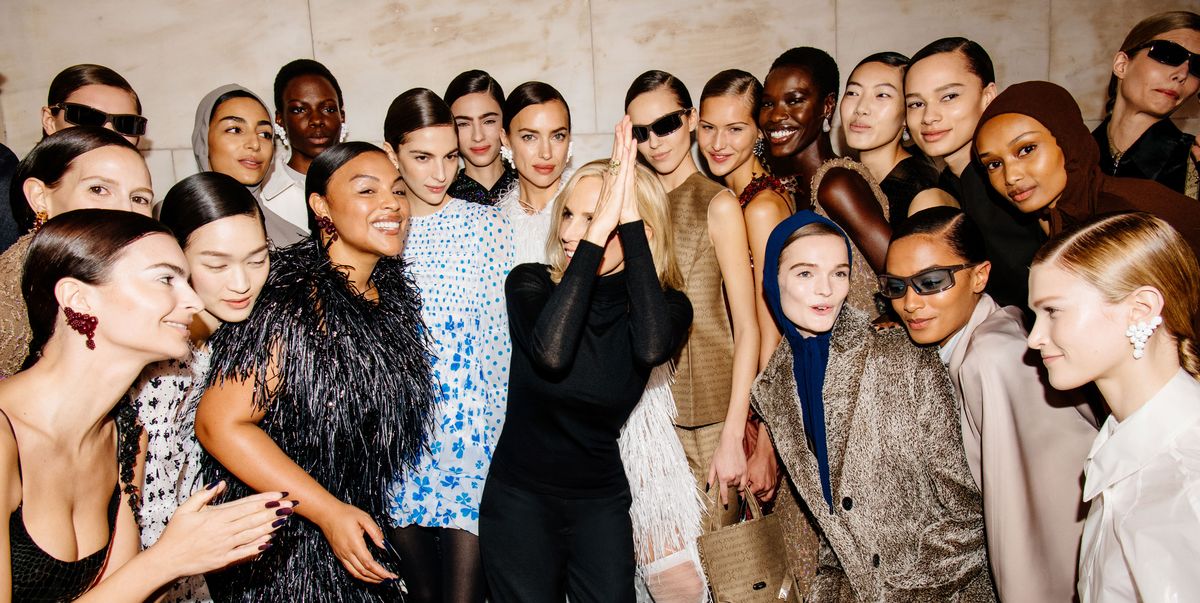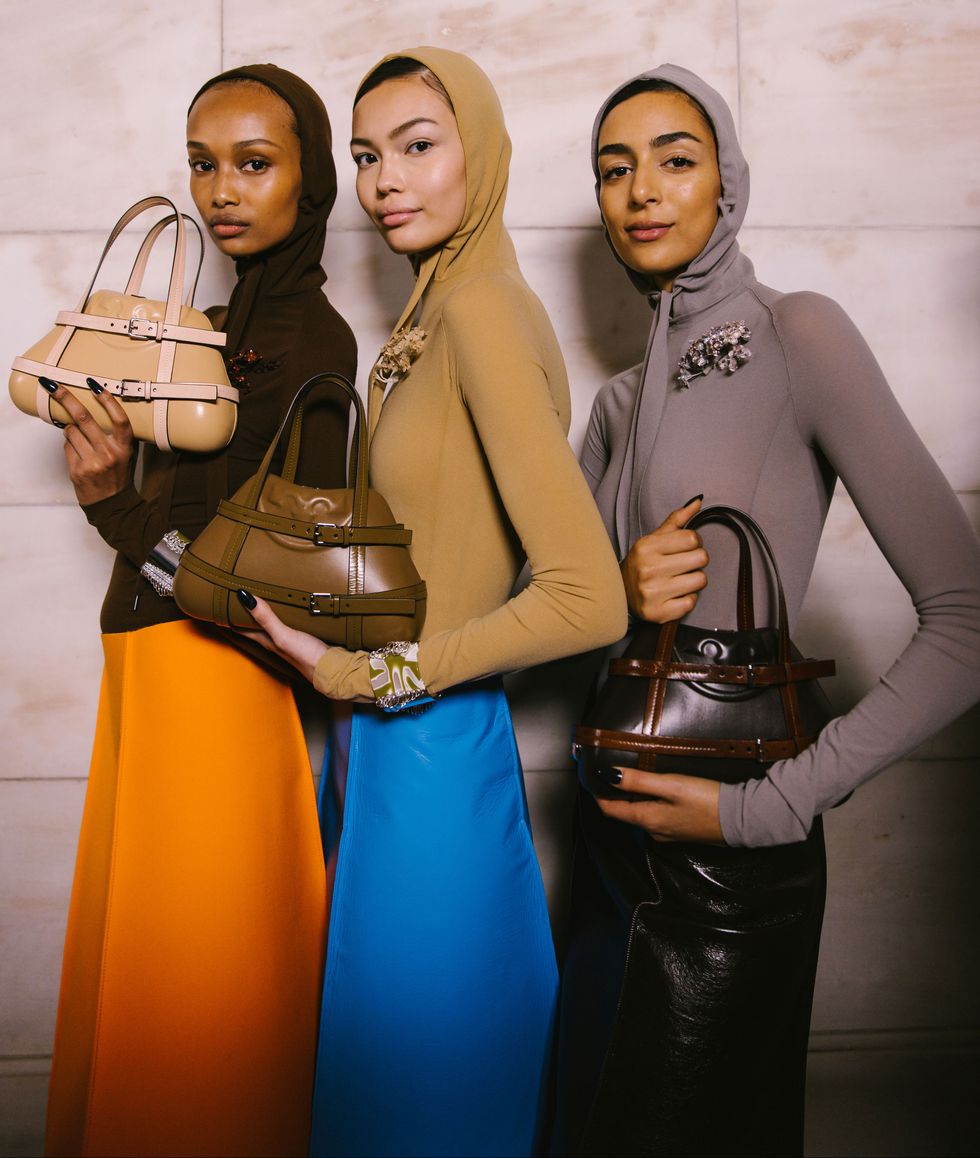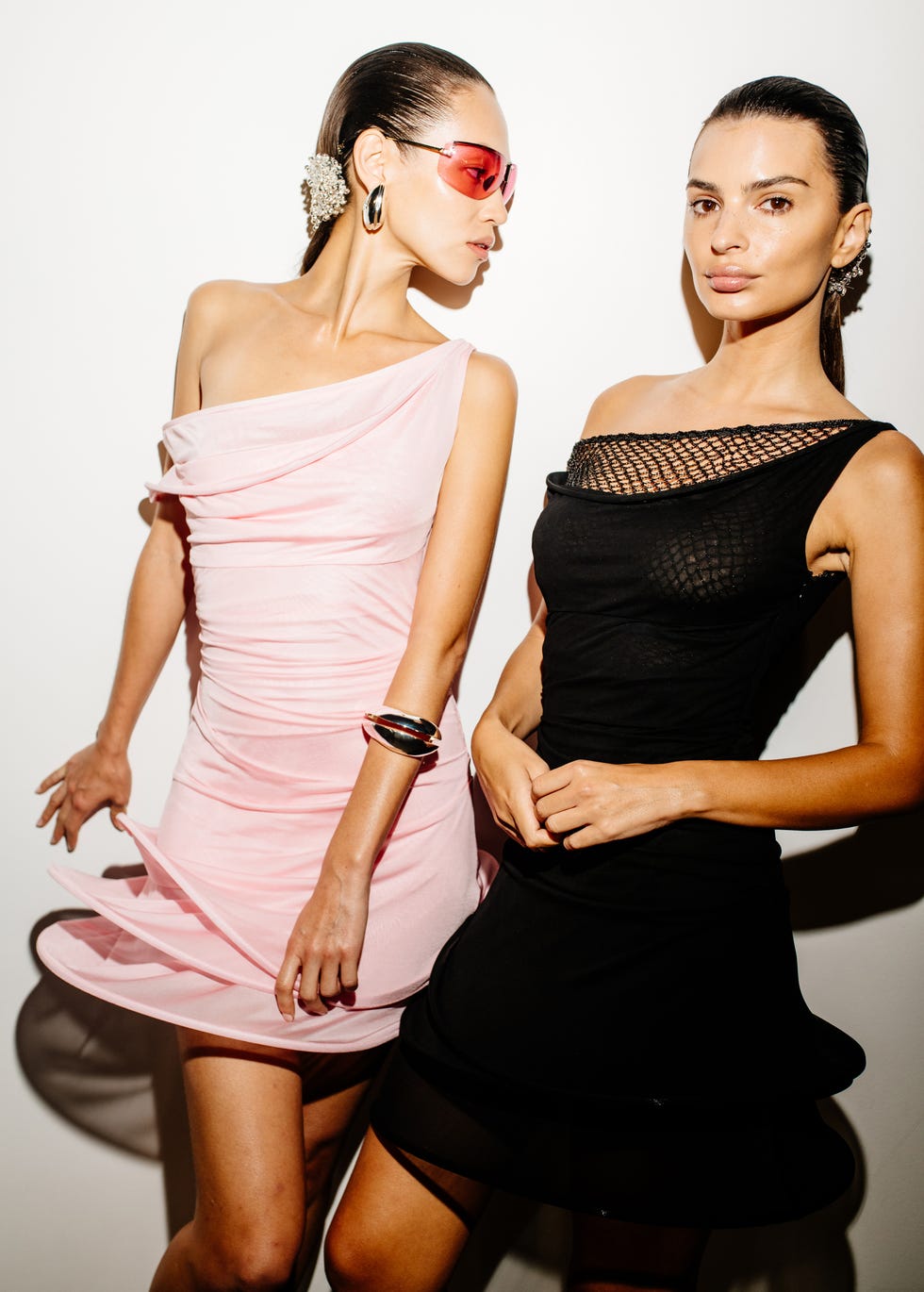It was 2004, the year of “Nipplegate” at the Super Bowl halftime show and sexist late-night talk show barbs. Ambition, Tory Burch recalls, was a dirty word for women back then, to the point where she recalls “shying away when a journalist asked me [about it] in a sort of negative way” as she was launching her namesake brand. That turned out to be a galvanizing moment for her, she says now. “I think it really cemented in me the desire to make it known that it was great for women to be ambitious.”
Growing up in pastoral Valley Forge, Pennsylvania, with three brothers and parents who told her she was equal to any man, Burch says, “I didn’t realize that women would be treated differently” in the workplace. When she entered the fashion industry, “I saw a very different scenario. I don’t know if it was because a lot of my bosses were men at the time, but I just think women are held to different expectations.”
Tory Burch, the brand, was an instant hit, with the designer’s colorful printed tunics and Reva logo ballet flats becoming bestsellers. Oprah called her “the next big thing in fashion,” and as with most things, Oprah was right. But beneath the shiny surface—Tory Burch, the woman, now admits—there was a fluttering of uncertainty. “I literally knew nothing when I first started,” she says. “I had never designed; I had never run a business. So it was trial by fire, and learning as I went.” She first raised funding for the brand by approaching a group of 110 friends and family members. “I said, ‘Give what you’re not scared of losing,’ because I was so terrified of taking people’s money.”
Somehow, in the interim, 20 years have elapsed. Sitting in her Manhattan office—a moodboard come to life complete with sketches, swatches, and stacks of art books—she says, “It’s hard to believe that it’s been 20 years, but also [the brand] actually feels quite young.” And Burch herself admits to feeling “like a new designer.”
In 2019, she stepped down as CEO to focus solely on design when her husband Pierre-Yves Roussel took on the post. “I’m back to where I want to be,” she says. You can tell from her recent collections, which have won critical raves and a CFDA nomination—and earned Burch the co-sign of cool girls like Emily Ratajkowski and Phoebe Bridgers. Things you might not have imagined on a previous Burch runway, like see-through shirts and edgy pierced mules, have popped up in the past few seasons; she recently collaborated with Opening Ceremony cofounder and designer–turned–restaurateur Humberto Leon on a whimsical L.A. pop-up store concept. When she returned to design full-time, Burch says, “I wanted to reset. That said, I didn’t want to alienate [anyone] either.”
Today, Burch is sporting a maroon sweater that feels like a nod to her preppy roots—but also an assortment of chunky rings and a massive Loewe necklace that I mistake for a bird (it’s actually an abstract flower). Much like her customer, Burch’s aesthetic can contain multitudes. It’s why she is intent on tuning out of fashion’s typical conversations about what’s “on brand.”
“That’s the opposite of what inspires me,” she says, calling it “such an inhibitor. It detracts from innovation and evolution. I wanted to stop that in its tracks.” For spring 2024, that meant taking historical motifs like hoop skirts and crinolines and turning them on their heads. “The concept of women being held back in any way is appalling to me,” Burch says. “When I started to think about the past and the restrictive nature of things, how women weren’t allowed to express themselves and their individuality and their bodies, it bothered me.”
Burch hasn’t just been thinking about women’s agency through her designs. She knew at the brand’s outset that she wanted to start a female-focused foundation, which she did in 2009. “I always thought about impact and scale,” she says. “How do we have our company be a vehicle for positive change?” Since then, the company has funneled over $85 million toward the foundation and women’s empowerment projects. “For many years, we didn’t talk about it externally, because I never wanted it to be perceived as marketing in any way,” she says. “And now I can’t wait to talk about it, because what we have done and what we continue to do is transformative for women.” Burch is fond of quoting the statistic that while half of entrepreneurs are women, they receive 2 percent of venture capital funding.
Her fellowship program for female entrepreneurs aims to redress that balance, shepherding 280 women through running their businesses and providing free education, mentorship, and connections. In 2018, she began hosting her Embrace Ambition summits, a celebration of the word she once shied away from. The events have featured speakers like Dolores Huerta, Gloria Steinem, and Billie Jean King; last year, she cohosted a London dinner for female thought leaders with U.S. ambassador to the United Kingdom of Great Britain and Northern Ireland Jane D. Hartley that drew Saoirse Ronan, Sinéad Burke, and businesswoman Akshata Murty, who is married to UK prime minister Rishi Sunak.
She’s also tried to run the kind of business that women like her needed when she was starting out (her workforce is 80 percent female, as is nearly 70 percent of the executive suite). Back in her corporate-fashion days, she says, “I loved my career, but I had three boys under the age of four. It was literally impossible for me to be flying back and forth to Spain all the time, so I had to give up a career. And I think many women face that.” In her offices, “I wanted a culture where people could feel safe, where they could leave and go to a doctor’s appointment with a child, or go to a lacrosse game.”
When I ask her about what the next 5, 10, or even 20 years might hold, she says, “I don’t think in those increments by any means.” Her mind is firmly focused on the present. Speaking of which, she tells me she just joined the advisory council of the still-underway Smithsonian American Women’s History Museum. With her trademark roll-up-her-sleeves enthusiasm, she says, “I said I wouldn’t be able to do any more boards. I got that call, and within 10 minutes I was like, ‘When do we start?’”
This article appears in the April 2024 issue of ELLE.





